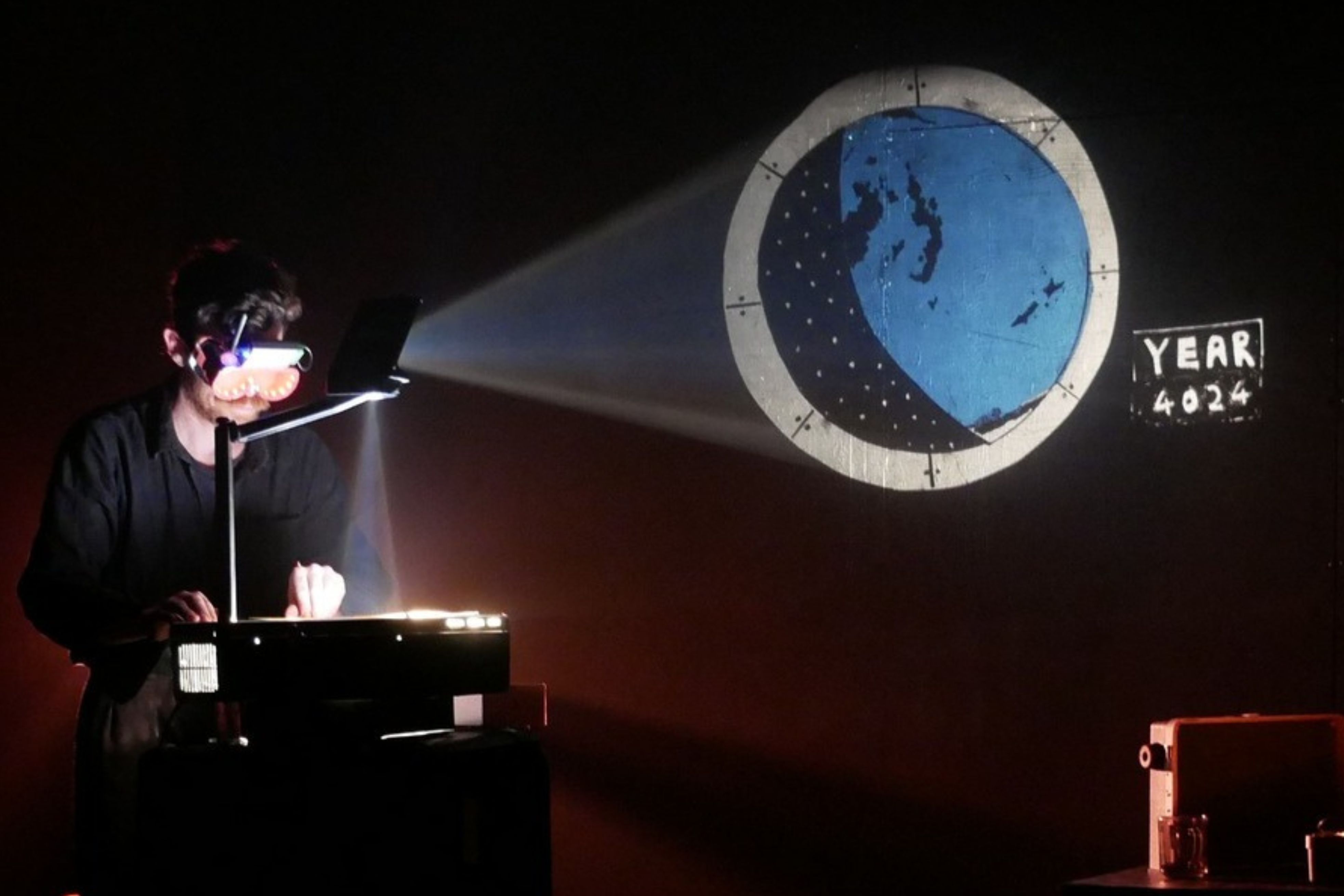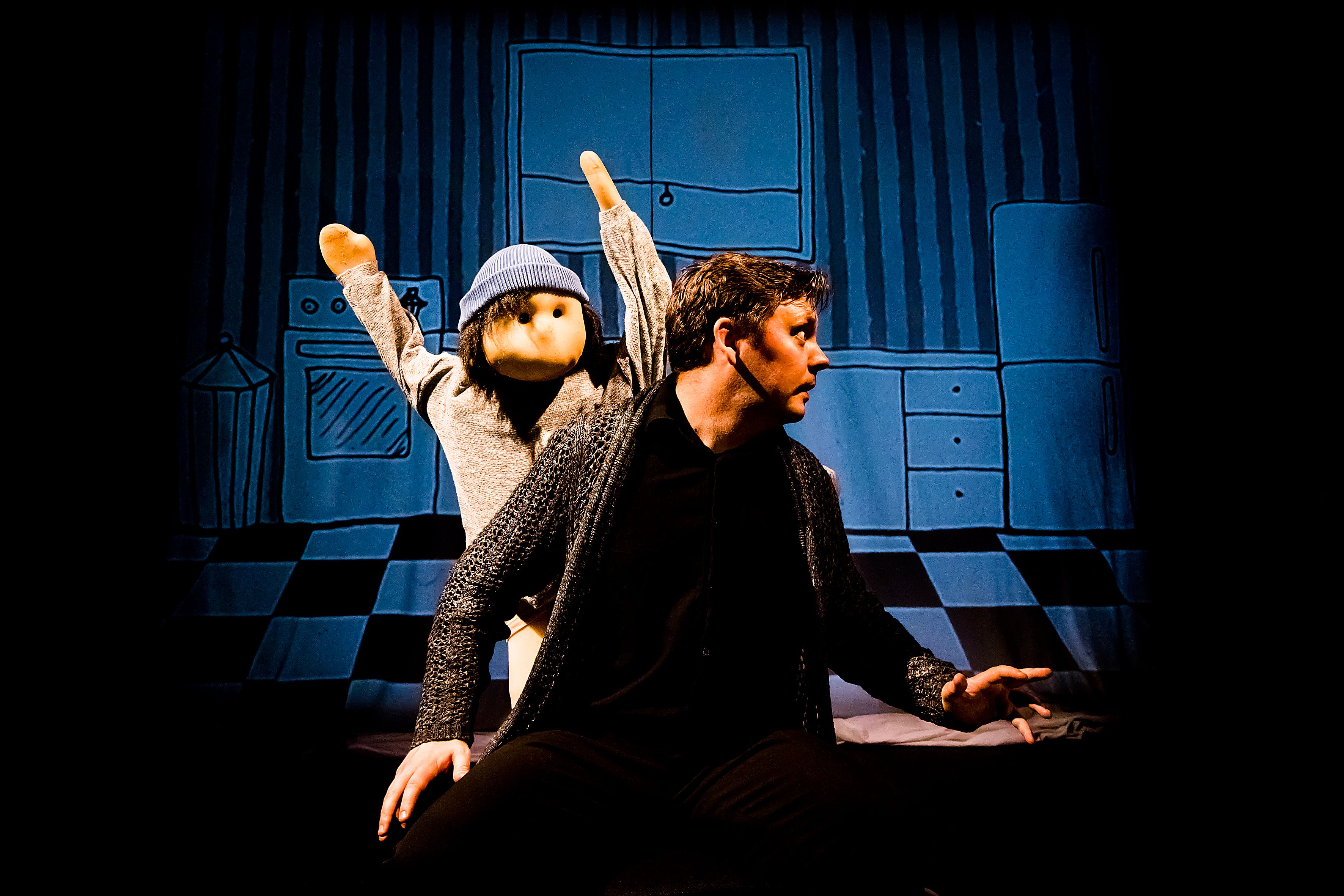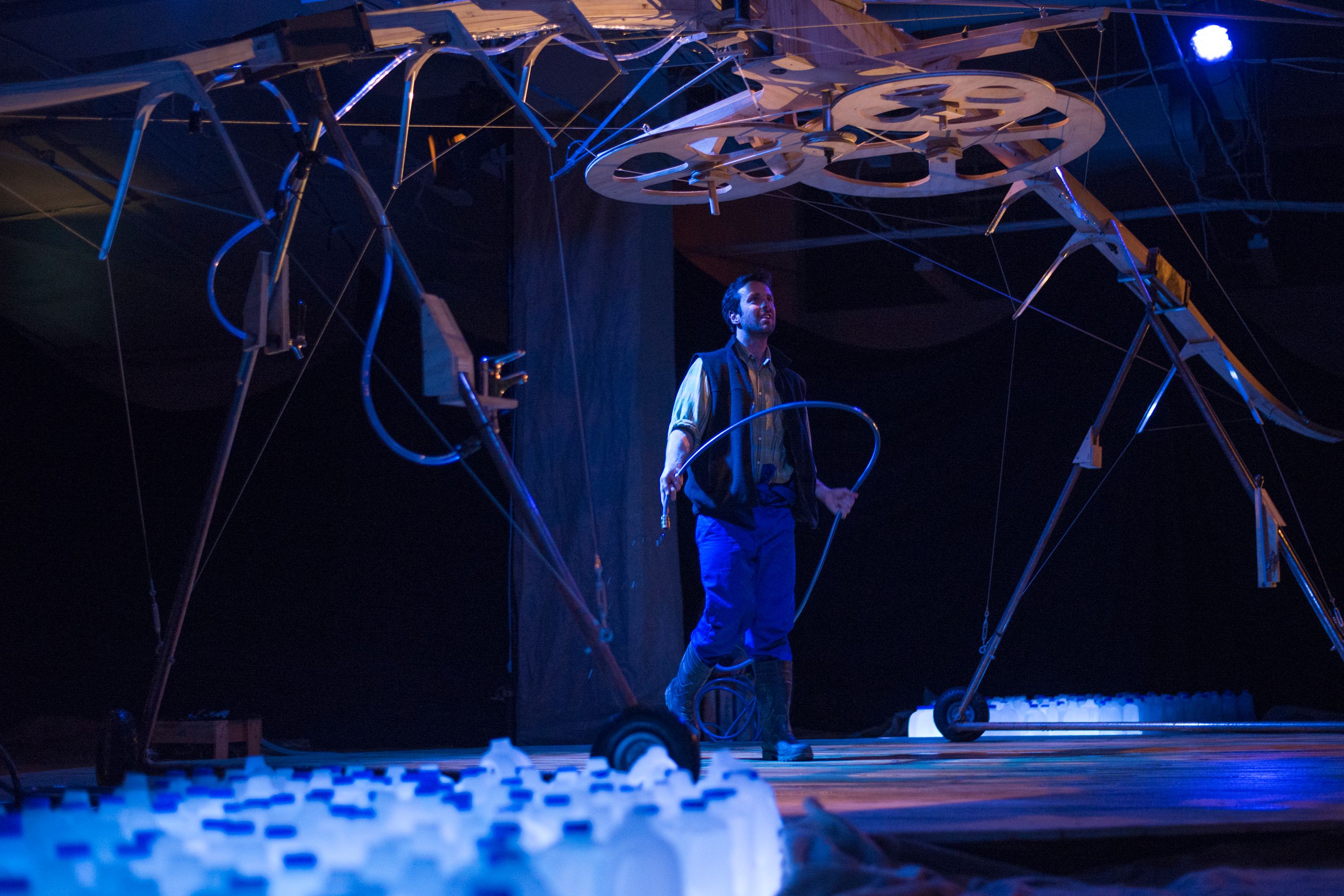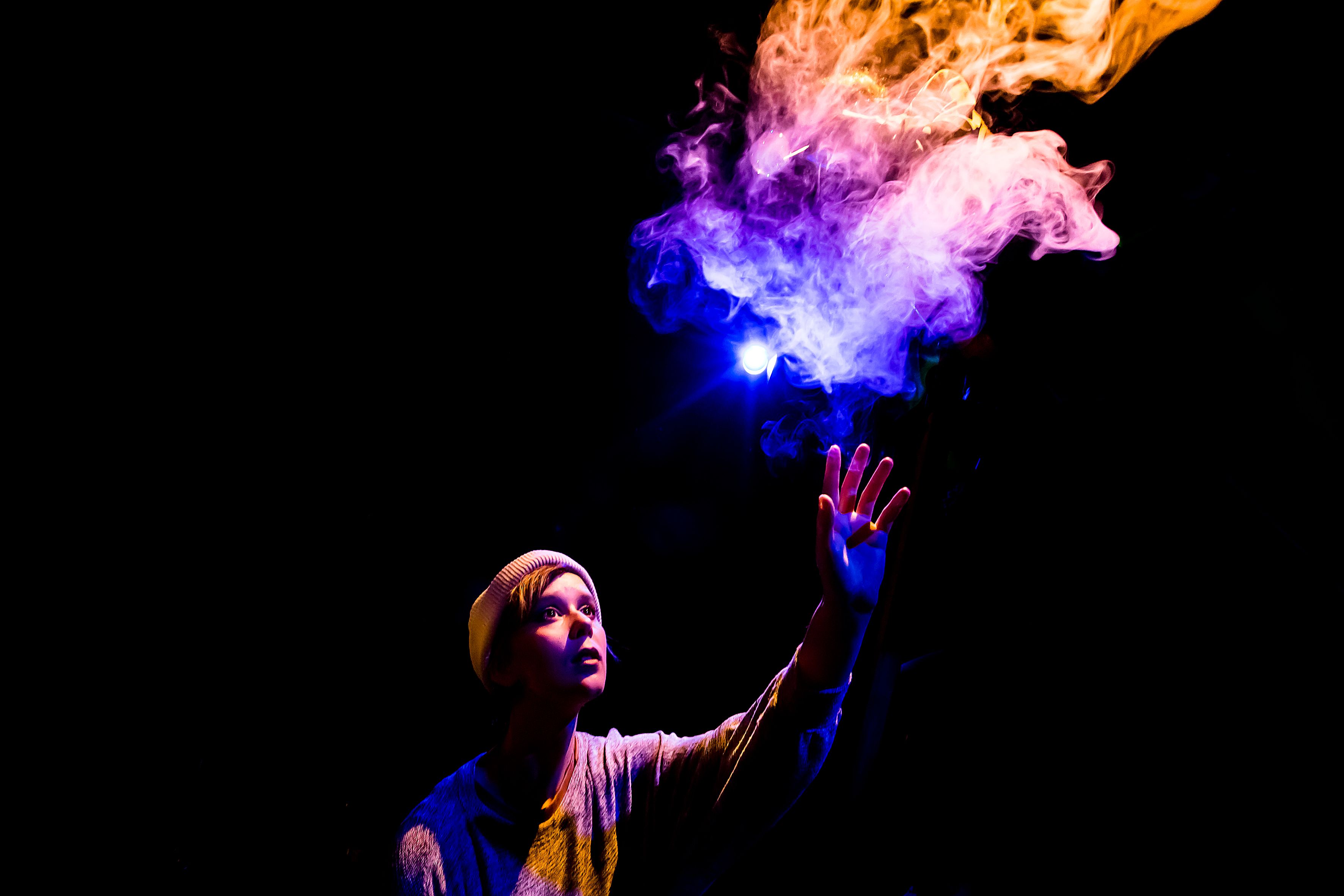How to tour a show without wrecking the Earth
Easy (and fun) practical tips from the authors of The Green Theatre Touring Guide.

Trick of the Light is an award-winning theatre company from Wellington, founded by Hannah Smith and Ralph McCubbin Howell. They like to make theatre that is playful, inventive, thought-provoking, and that speaks to the here and now. In November 2024 they published New Zealand's first Green Theatre Touring Guide, which takes into account our infrastructure and geography.
The beauty of theatre is that it’s ephemeral – you have to be there in the room. Touring shows, especially, should only live on in the mind. But often they also leave behind a stonking great environmental footprint.
It doesn’t have to be this way.
We run a touring theatre company. For the last decade we’ve been making and taking our shows round Aotearoa and the world. Touring is important to our arts practice creatively, and it’s flat out crucial to our business financially – plus we think sharing stories with other communities is a valuable thing to do. But right now the climate is in crisis, and we need to adapt our ways of working to be as sustainable as possible.
Last year, we wrote the Green Theatre Touring Guide – a guidebook and website for artists touring in and from Aotearoa. It draws on the expertise of people far more knowledgeable than us, but also on some things we’ve picked up through the last ten years of touring. It’s indebted to the many great resources from other parts of the world, but also it’s tailored to suit our context – we got sick of reading guides from Europe that would say things like “when touring internationally, consider travelling by train…”
This month we’re remounting our show The Griegol for seasons in Wellington and Tauranga – a tour which, through no lack of desire, incorporates zero trains. The show is a work without words that plays out like a silent film being made live onstage. It’s a big one for us, with five actors, puppets and live animation, music, and projection.

The last time we did it was for a tour to the states in 2023. It was our biggest tour to date with seven people on the road, four states, and two vehicles. We were midway through writing our green touring guide, and wanted to put to the test some of the strategies we were advocating.
There is no silver bullet, and there’s always more to learn – we’re on this journey ourselves, and we balance environmental aspirations with the realities of making work in a wildly under-resourced sector. But here are some things we’ve discovered through the last ten years of touring:
Stuff you do before you go will have the biggest impact
It is all about the plan. Of course, as in every aspect of being an artist in this country, we have to be canny with our resources. Carrying weight (people and freight) over distance is the quickest way to burn through your carbon budget, so you want to take minimal personnel, and minimal goods. If people can do double duty, fantastic. If you can save on suitcases with an incredibly efficient pack, hooray. Can the director also be the stage manager? Can the shoes fit inside the lampshades?
Most of your carbon is going to be travel – we always try to get as much out of a trip overseas as possible. In recent years we’ve tried to practice ‘slow touring’ – coordinating opportunities to minimise long haul transport. When we took our show Tröll to Australia in 2022, we had three weeks between a season in Darwin and another one in Perth. We filled the time going to an arts market and doing a writing residency rather than going back and forth across the Tasman twice.
Your mode of transport on the ground can also make a difference. With the US tour, we had to hire two vehicles, and the car rental companies didn’t have anything with good fuel economy. We knew the tour was going to involve a lot of driving, so we did a LOT of research, and ended up finding a hybrid van through a peer-to-peer service called Turo.
Little things add up
Even though the travel you plan in advance might have the single biggest impact, it’s still worth taking action once you’re on the road. Use a compost bin, recycle, keep your keep cup close to hand, switch to digital programmes, and where you can use self-catering accommodation. Little things can add up to a sizeable impact, it feels good to take tangible action, and the work you do on tour is important because it’s public facing. Walk the walk, and show venues, audiences, and other touring companies what green kaupapa looks like in action
You’ve got to make it easy for people to get on board
Every show comes with a technical rider – start using a green rider too. It’s a way to communicate to presenters how to reduce the environmental impact of putting on your show. There’s no point grumbling about the lack of recycling bins, or the excess of single use plastic, if this isn’t something you’ve said that you care about in advance. Some people create these as stand-alone documents, but we’ve found that you’re more likely to get eyes on them if you build them into your tech rider.
We first rolled our one out touring The Griegol to the states. When it came back from the first venue, every clause except for one had been crossed out in red. We thought, well shit – at least they read it.
In person though, we found everyone was keen to get on board. The same venue that crossed out those green rider clauses delightedly announced that they’d linked up with the farm on campus to compost food waste from the green room (and they were now planning to do this going forward).
A green rider isn’t a list of demands, it should be a conversation starter. And regardless of what the venue’s doing, you do you. If they don’t have a recycling bin, all good – bring your own.
Green thinking can make your work better
Being mindful of your environment footprint isn’t just for feeling smug. It often saves you money too, and pushes you towards innovation.

In 2013, we made a show called Broken River about dairying and irrigation. It most definitely wasn’t a touring show, staged around 6m kinetic water sculpture that rained water down on the actors. Until late in the game, our plan was to pump this into a miniature braided river that ran beneath the audience’s feet. The vision was big but so was the price tag, and it would have needed a whole heap of single-use plastic sheeting. As production week got to the crunch, we changed tack for something less literal: hundreds of empty plastic milk bottles, laid out like river, to represent 1000 L of fresh water — at the time a (conservative) estimate of how much went into producing a litre of milk. These were sourced with alarming efficiency from cafe bins nearby. It was a choice we made out of necessity, but as well as being much greener, it turned out to be more effective in expressing the show’s themes.
Don’t forget your handprint
It’s harder to quantify than your carbon footprint, but it’s worth considering your positive impact as well. Find ways to deepen and add value to the travel you are doing – run workshops, have meetings, see shows. Demonstrate green touring in action, and talk about what you’re doing – we now include a section in our programme where we share what we’re doing, and crowdsource new ideas. There’s far more to touring than just presenting your show in a new place. You’re part of an artistic conversation; you are filling your cup and finding new inspirations. On the US tour of The Griegol we got to see some amazing shows in NYC: works by Punchdrunk, Pina Bausch… but on the road we also stumbled upon a museum that featured gigantic dioramas of Gettysburg recreated with models of cats. You just can’t get this shit here.
Tally up
Offsetting is always a last resort. It doesn’t absolve you of trying to make your tour greener, but when things can’t be reduced or redesigned (read: flights), it gives their footprint a financial value. Done right it’s also a way to get behind positive projects. Our thinking is the more local the better – if you’re going to offset, you’re better putting your putea towards a local grassroots project than some mysterious carbon offset programme overseas. We built a spreadsheet to tally our footprint, put this through Circulate’s emissions calculator, and figure out a contribution to Trees That Count.
Doing something is better than doing nothing
It’s also worth saying that you don’t have to tackle everything at once – don’t let perfect be the enemy of good. It’s better to take any green action than none at all. Start by tackling something small. Start by getting a compost bin.

We’ve got the skills already
Making and touring work sustainably can feel like a daunting prospect. But remember this: you’re an artist from the ends of the earth. You’re used to making extraordinary work with scant resources (and using those resources again and again). On a global scale, shows from Aotearoa are already compact and nimble, and because our population centres are small, we’ve worked out how to tour. But we can do more. Some of this stuff will be things you are doing already, the rest of it will build on skills that you already have. Rest assured: you’ve got this.
The Griegol tours to Hannah Playhouse in Wellington 23-25 October and to Tauranga Arts Festival 28 October.
The Green Theatre Touring Guide was published by Playmarket and PANNZ with support from MCH.
Read it online at www.greentheatre.co.nz or buy a copy here.